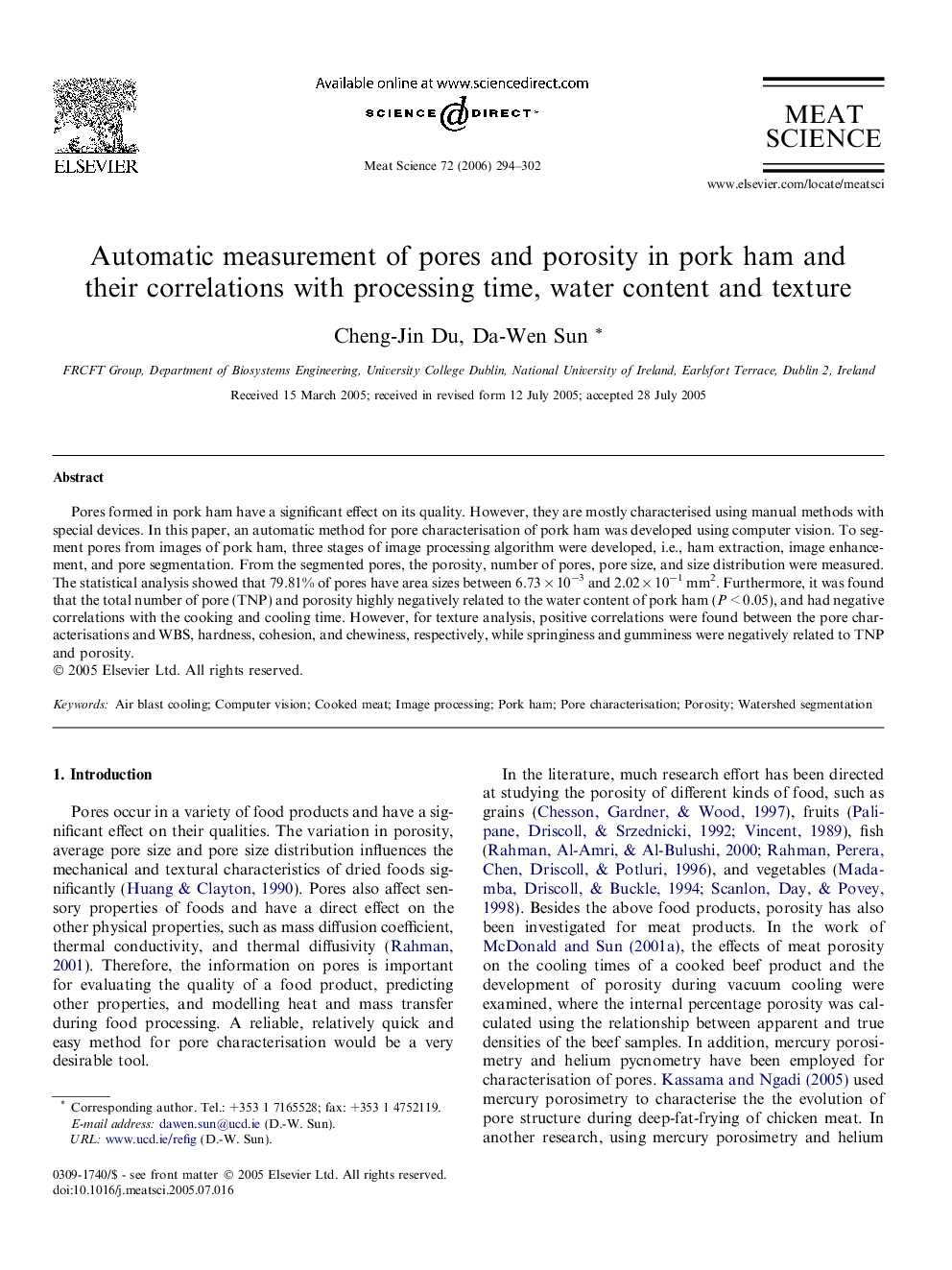| Article ID | Journal | Published Year | Pages | File Type |
|---|---|---|---|---|
| 2451674 | Meat Science | 2006 | 9 Pages |
Pores formed in pork ham have a significant effect on its quality. However, they are mostly characterised using manual methods with special devices. In this paper, an automatic method for pore characterisation of pork ham was developed using computer vision. To segment pores from images of pork ham, three stages of image processing algorithm were developed, i.e., ham extraction, image enhancement, and pore segmentation. From the segmented pores, the porosity, number of pores, pore size, and size distribution were measured. The statistical analysis showed that 79.81% of pores have area sizes between 6.73 × 10−3 and 2.02 × 10−1 mm2. Furthermore, it was found that the total number of pore (TNP) and porosity highly negatively related to the water content of pork ham (P < 0.05), and had negative correlations with the cooking and cooling time. However, for texture analysis, positive correlations were found between the pore characterisations and WBS, hardness, cohesion, and chewiness, respectively, while springiness and gumminess were negatively related to TNP and porosity.
